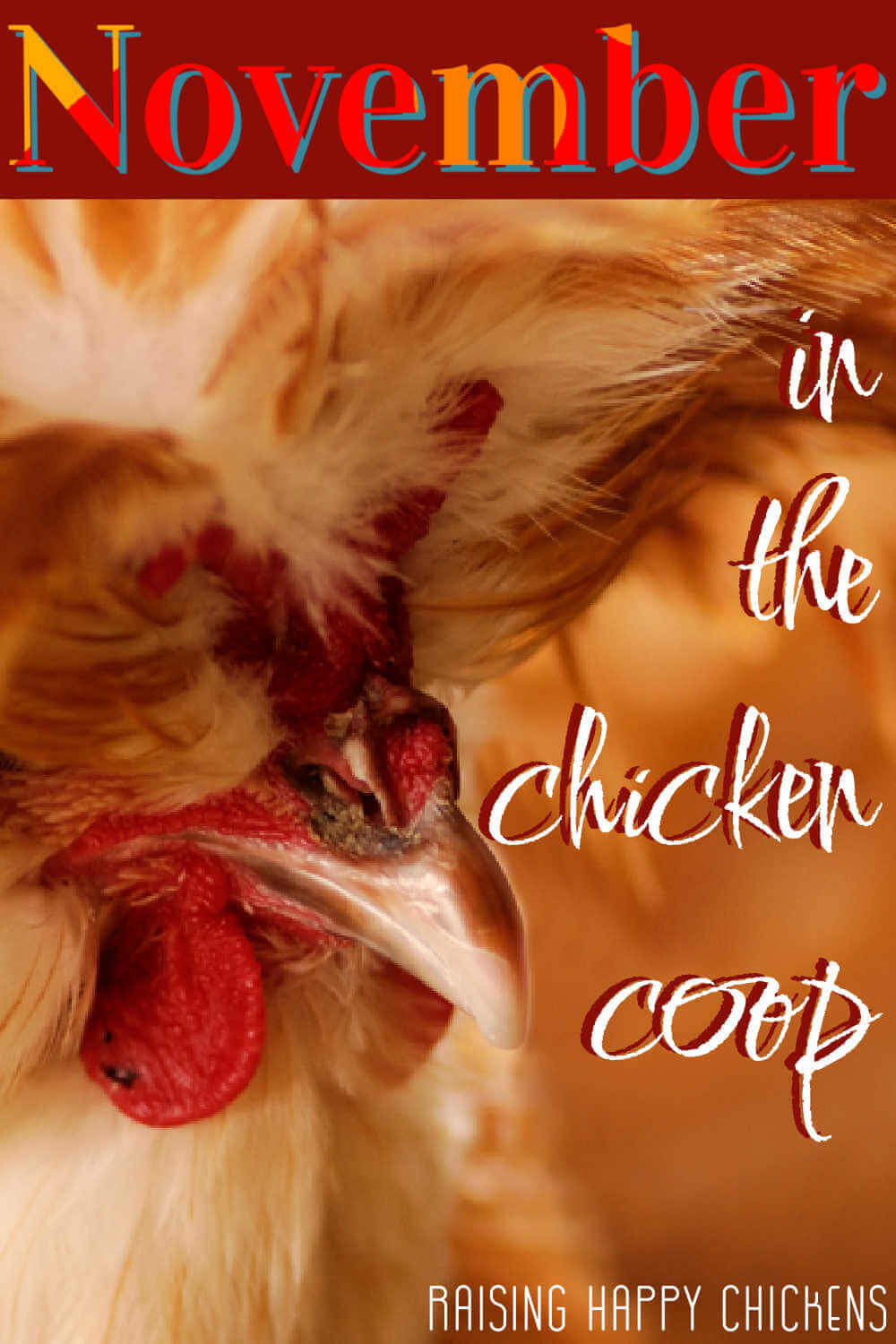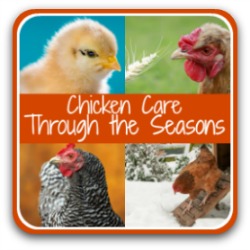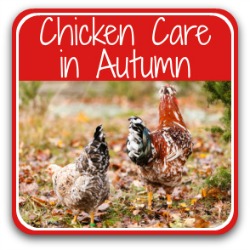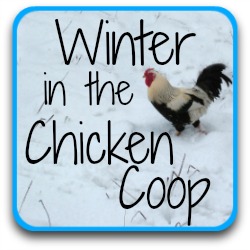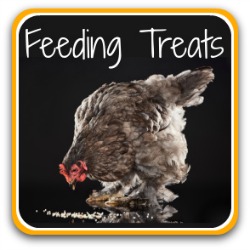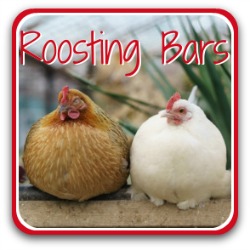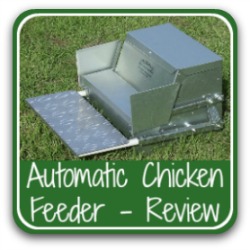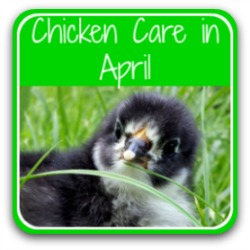- Home
- Monthly care
- November
Raising chickens in November: 20 must-do tasks.
Are you in my newsletter group? If so, you'll be able to download your simple checklist for this month's tasks from the newsletter which comes to you in the first week of the month.
If you're not in my newsletter group - why not join? You'll get a free checklist of tasks every month! Click here for more information.
Now, the crisp days of autumn are giving way to the cold of winter.
Here are 20 tips from 5 particular areas to focus on this month in order to prepare your flock for the seasonal changes.
One a day and you'll be done before the month is out - and your flock will thank you for it!
1. Chicken coops: to heat or not to heat?
As temperatures drop during November and December, many chicken-lovers' thoughts turn to heat, and decide their chickens need a little warmth in the coop.
It's a controversial subject because even careful use of heaters and heat lamps can lead to accidental fires.
Put fire together with bedding, wooden coops and chicken feathers and you have a recipe for total disaster.
Personally, I don't have electricity anywhere near my chicken coop, and my hens survive Italian winters of sometimes -20ºC (-4ºF) with no problems.
But each of us must make an informed decision that's right for our flock and our circumstances. Base your decision on the kind of high quality information you'll find here.
And please, think long and hard before adding a heat lamp or even electricity to your coop.
Do chickens get cold?
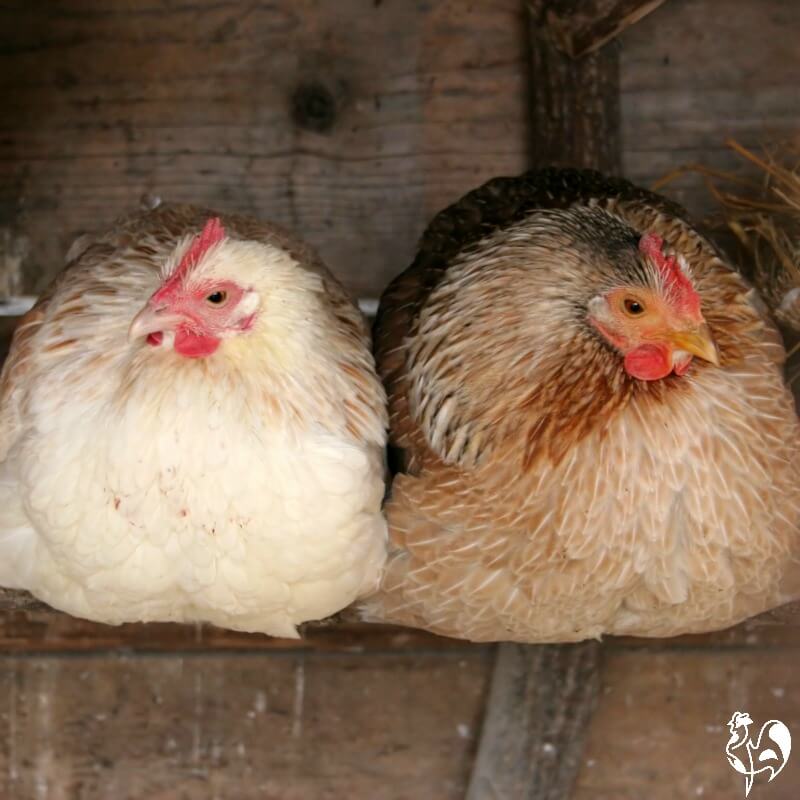 Chickens instinctively know how to keep themselves warm.
Chickens instinctively know how to keep themselves warm.Chickens are not people!
They do not feel the cold like we do and they deal perfectly well with extreme cold.
They keep warm by trapping air underneath their feathers, so they moult in early to mid autumn in order to have pristine quality feathers to see them through the winter.
On the roost, they instinctively protect vulnerable parts.
They fluff up to cover their feet, tuck their head under their wing to protect the comb and huddle together for extra warmth.
What to do.
1. Choose your breeds carefully. Take advice from backyard owners in your area who have been raising chickens for years - or alternatively from your feed store or online hatchery.
Small combed chickens like the Wyandotte, and hardy hybrids like the Red Star, do well in cold areas.
2. Check your roosts. Allow between 8" and 10" of roost per chicken, depending on breed. Make sure they're solid, clean and free from mites.
3. Think about winter bedding. I use sand as a bedding in the summer coop, but because of temperatures as low as -20C, I change to the deep litter method in the winter.
If your region has extreme temperatures, you may find sand too cold once winter sets in. Take a look at the deep litter method as an alternative. If you're going to change, do it as early as possible this month. It should really have been done in early October.
4. Protect your run from cold winds by adding some windbreaks. Planting bushes in the early autumn helps. Alternatively, use cardboard or heavy duty plastic tied around the edge of the run. It doesn't look pretty but it does the job of protecting chickens from cold winds.
5. On no account dress your chickens in winter woollies in a well-meaning attempt to keep them warm. It prevents them from fluffing up their feathers, and they're far more likely to die from the cold than if you allow them to warm themselves naturally.
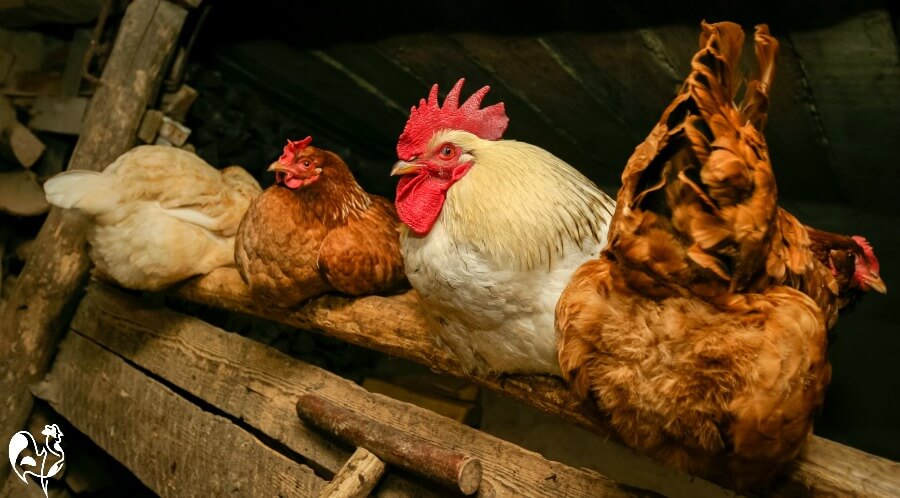 Feathers fluffed, feet under - roosting time!
Feathers fluffed, feet under - roosting time!2. Guard against frostbite.
Although chickens can deal well in low temperatures, they cannot cope with the combination of damp and draughts. That mix can lead to frostbite, particularly in large-combed chickens.
What to do.
6. You should have checked the coop for draughts last month. If you didn't get round to it, do it now. Block up any holes in the lower two thirds of the coop, from just above roost level right down to the floor. Winds at that level are welcome in the summer to provide a cooling breeze, but in the winter can be a killer, especially for older chickens.
7. Make sure to leave some ventilation in the top third of the coop. There's a difference between allowing ventilation and having cold winds whistling past your flocks' ears. Ventilation should be at a much higher level than the roost – around the level where the walls meet the roof, or higher.
Use hardware cloth to block gaps so predators can't get through, but don't block them altogether. This allows the moisture created by chicken breath, and the ammonia created by their poop, to rise and escape.
8. Chickens sometimes roost with their head under their wing, which helps protect the comb from the cold. But you still need to check your chickens' combs, wattles and feet. If they show any signs of turning black, you may have a case of frostbite.
Check this article to find out how to deal with that.
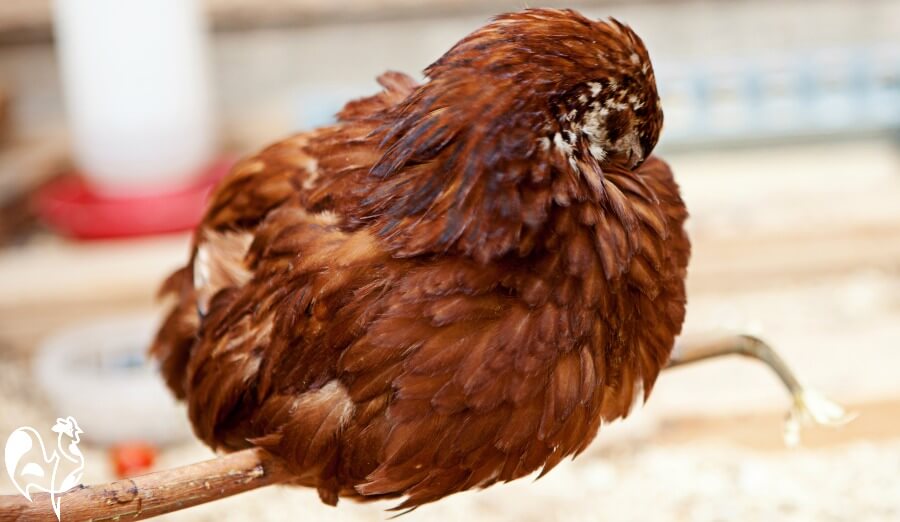 Head tucked under wing helps avoid frostbite.
Head tucked under wing helps avoid frostbite.9. Go into the coop on a rainy day and make sure there is no water dripping from anywhere. If there is, fix the leak straight away. Don't leave it. Wet bedding is a breeding ground for bacteria, and bacterial disease is a killer for chickens.
3. Get rid of rodents.
It's not only humans who feel the cold. This is the time of year when rodents want a bit of warmth, too. Seeing rats or mice sneaking into your coop to warm themselves on your chickens is not how you want start the month.
It's important not to over-dramatise this, but it's equally important to understand that, apart from just not being very pleasant, rodents can bring disease to your coop and an infestation can have drastic effects on your chickens' health.
How do I know? I once had to deal with no fewer than three rats' nests. By the time I realised what was going on, I had an out-of-control problem.
See what happened, here.
 A rat hole - the first sign I had of a rat problem.
A rat hole - the first sign I had of a rat problem.What to do.
10. It's not true, as some people think, that having chickens automatically means you'll get rats. There are common-sense steps you can take to avoid rodents making their home in your coop in the first place.
For 5 easy steps to making your coop a rodent-free zone, see this article.
11. Check your coop regularly for signs of an infestation. Not sure how to do that? No problem – I show you over on this page.
12. One of the most effective ways of keeping rodents at bay is to have a feeder which is completely closed. Rats and mice can get into the tiniest of spaces. I thought I had it covered with a metal container with a lid but no...
They climbed inside using the lip of the container where the chickens feed from.
The solution I found was a completely enclosed, automatic feeder. You can read my review of it, here. Seriously consider buying one. I guarantee, you won't regret it.
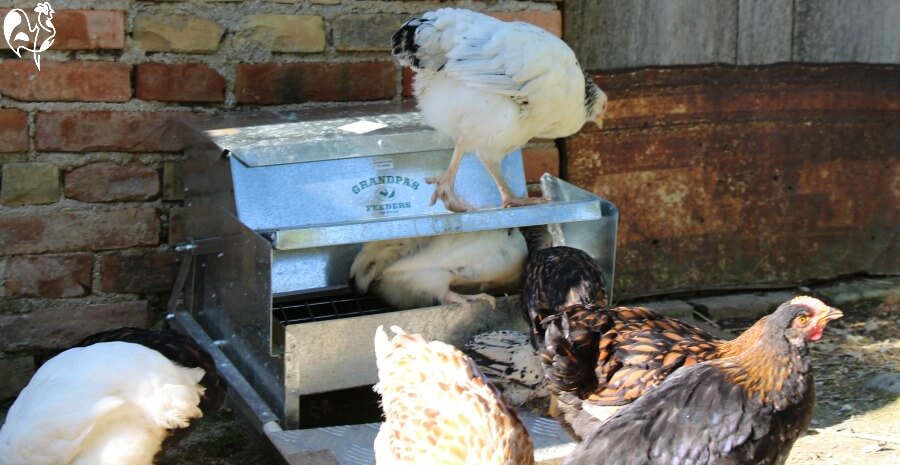 My automatic feeder - a great hit with my flock, but not with rats and mice!
My automatic feeder - a great hit with my flock, but not with rats and mice!13. There are several ways of getting rid of rats if you already have an infestation. None of them is pleasant. Choose the one which best suits your situation, always bearing in mind that, no matter how unpleasant, rats are sentient beings.
Choose a humane option. You'll find a list of possible methods at this link. You'll also find methods which have been tried, tested and found not to work, here.
14. Consider buying an electronic trap as a way of controlling the odd rat. It won't help if you already have an infestation, but for one or two before they have a chance to breed, I've found it invaluable.
See my review of the best, here.
4. Protect health with high protein foods.
Cold weather, the end of moulting, predators looking for food, rats looking for warmth... Late autumn going into winter can be a stressful time for your flock.
High protein foods can help with that. They should never take the place of daily feed, but adding treats to your flock's meals during the late autumn and into winter is fine.
Always in moderation, though.
What to do.
15. Chickens do not need a lot of extra fat. Keep away from online recipes for chickens using animal fats like suet. They are not garden birds! High levels of fat can lead to problems of obesity in poultry just as much as it does in humans.
And that can lead to serious illnesses, including Sudden Chicken Death.
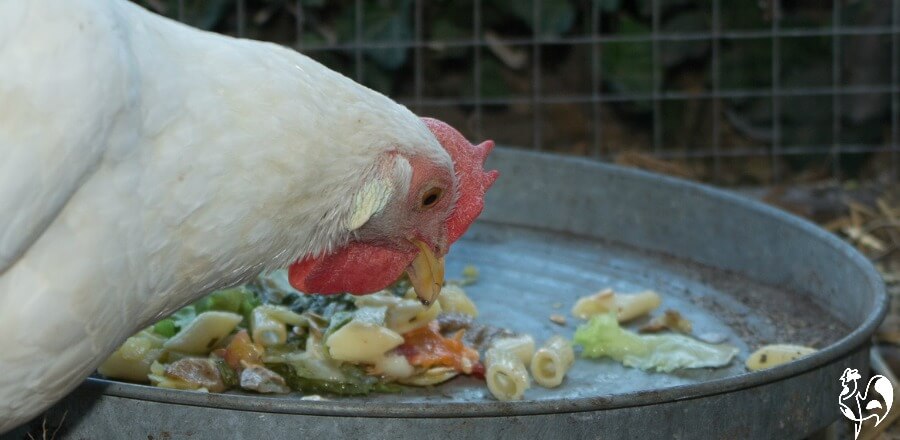
16. Instead, look for sources of healthy high protein treats. Even something as simple as garden peas have a protein content at 23%, and little to no fat.
17. Follow my protein platter recipe here to spark ideas about how to use what you have in your pantry to keep your chickens healthy in November.
18. As temperatures drop, don't forget that water is even more critical than food in the winter months. If you didn't do this last month, make sure your chickens will have a supply of un-frozen water during the winter. More details here.
5. Protect your chickens from celebrations.
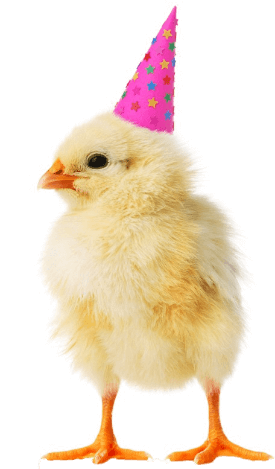 Chickens are not big party-goers!
Chickens are not big party-goers!November is a time for celebrations and remembrance.
In Italy, we celebrate the wine harvest and the gathering of autumn crops like chestnuts and cacchi fruit (persimmon) and, right at the start of the month, All Saints and All Souls Days, better known in other parts of the world as The Day of the Dead.
In the UK, "Bonfire Night", also known as Fireworks Night or Guy Fawkes Night, happens in early November and is celebrated with, as the names suggest, bonfires and fireworks.
In the US there's Thanksgiving and Veterans Day, in other parts of the world known as Armistice or Rembrance Day.
Some of these are days of quiet remembrance but others involve noisy, and occasionally dangerous, celebrations.
Chickens know none of this. As far as they're concerned, it's just another day in the coop. But sometimes, they need protection from the celebrating humans around them.
What to do.
19. If you know celebrations are going to be noisy, especially if they involve fire and / or fireworks, keep your chickens in the coop. They won't like being locked up for the day, but better that than being caught by a stray firework.
20. If you have guests, or there are party-goers in your neighbourhood, make sure they don't go near your coop, particularly if they've been drinking. It's very easy to harm a chicken without meaning to when you're caught up in the excitement of festivities.
And finally...
November is often a colourful month with some lovely days: blue skies and crisp, clear air. Remember to get out there into your coop and enjoy the final days of autumn!
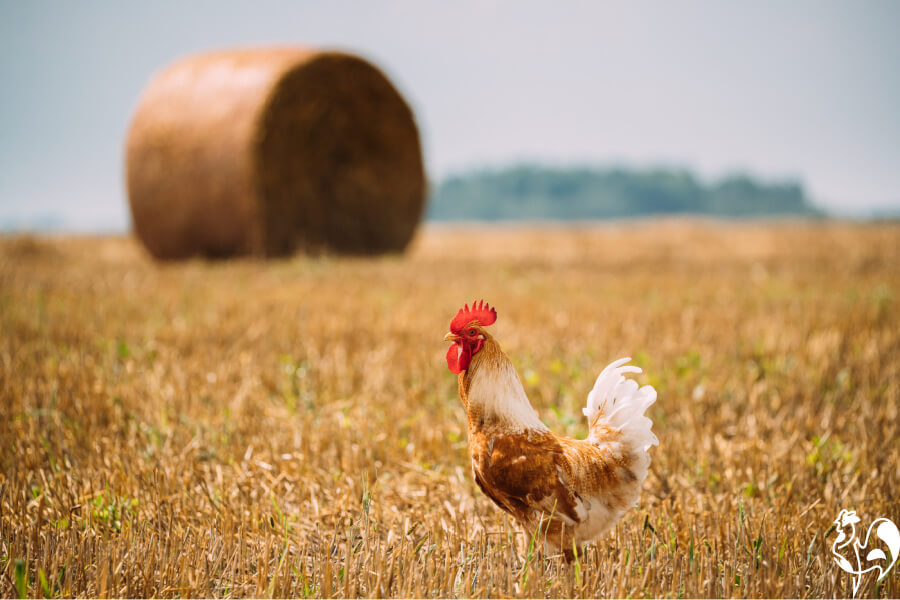
Enjoy this month with your chickens!
If you found this article helpful, you'll like these too!
- Home
- Monthly care
- November
